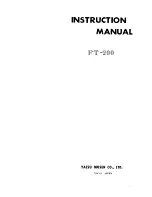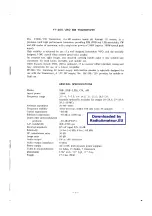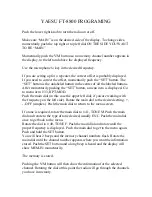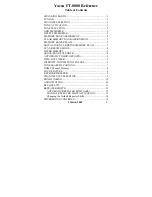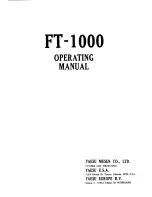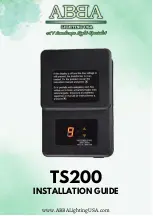
For each frequency which will not tune correctly you will need to determine whether the
tuning is high or low in frequency. Generally any frequencies which will not tune will always
be out the same way. When the antenna is made most frequencies are deliberately made
on the low frequency side and adjusted upwards by the placement of "tuning rings".Tuning
rings are single short circuit rings of 20 amp fuse wire placed on the windings of an
individual part of the antenna. A tuning ring inductively raises the frequency of the section
of antenna over which it is placed.
It must be understood that the tuning of
an antenna on a particular vehicle or
installation may not hold for other
vehicles or installations. To determine
whether any particular frequency tap is
high or low hold the tune key down on
the relevant frequency and observe the
VSWR on a suitable meter. Get an
assistant to slowly move his outstretched
arm closer to the antenna tap in use.
If the VSWR gets better then the antenna
is too high in frequency. This indicates
that there is insufficient antenna to
ground capacity. Usually this happens
when the antenna is mounted too far
away from the body of a vehicle. Either
re-site the antenna closer to the vehicle
or remove any tuning rings which are
already on the antenna.
If the VSWR gets worse when following the above procedure then too much capacity is
already present, this is frequently encountered when mounting the antenna too low on a
vehicle bumper bar or when mounting close to bodywork as in cab-over type vehicles. In
this case either re-site the antenna further away or add extra tuning rings to the frequency
sections affected until a suitable VSWR is obtained.
Note:
Truck cab-over installations usually produce distorted radiation patterns even
when the VSWR looks good.
When tuning is complete any new rings added should be coated with epoxy resin to secure
and protect the ring from damage. Five minute quick setting type epoxy is suitable. If rings
need to be removed they may be cut off using a sharp pair of side cutters. Take care not to
cut into the body of the antenna.
Note:
If the wander lead is damaged or lost and requires replacing the number on the
first tap eg. Wl-60 indicates the length of the wander lead was 60cm. When
making a replacement wander lead ensure it is made to this length to obtain
optimum performance.
IF THE HIGHEST FREQUENCY ON THE WHIP
REQUIRES ADJUSTMENT, INITIALLY PLACE THE
TUNING RING HERE AND SLOWLY MOVE UPWARDS
UNTIL A SATISFACTORY SWR IS OBTAINED.
IF THIS FACTORY TUNING RING IS NOT FITTED AND
THE HIGHEST FREQUENCY ON THE WHIP REQUIRES
ADJUSTMENT INITIALLY PLACE THE TUNING RING
HERE AND MOVE SLOWLY UPWARDS UNTIL A
SATISFACTORY SWR IS OBTAINED.
IF
THE LOWEST FREQUENCY REQUIRES
ADJUSTMENT INITIALLY PLACE THE TUNING RING
HERE AND SLOWLY MOVE UPWARDS UNTIL A
SATISFACTORY SWR IS OBTAINED.
ONLY
BARRETT 950 HF TRANSCEIVER
PAGE 115































